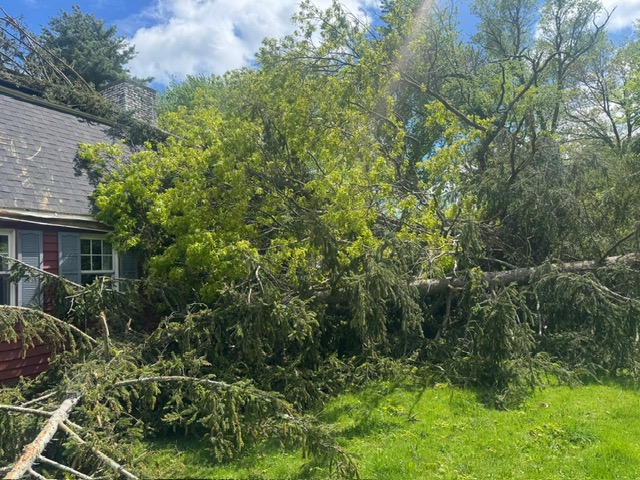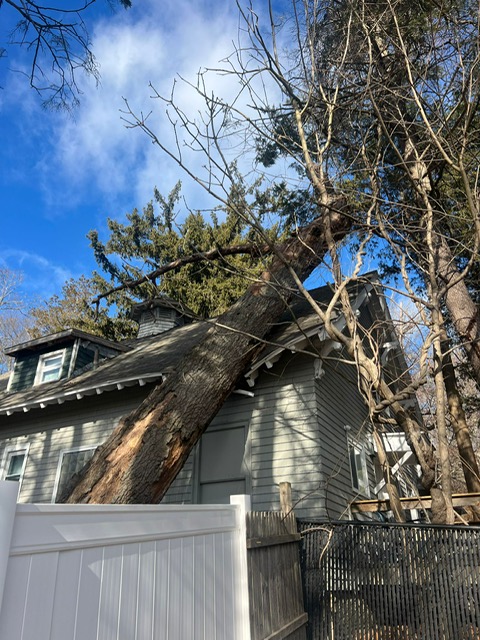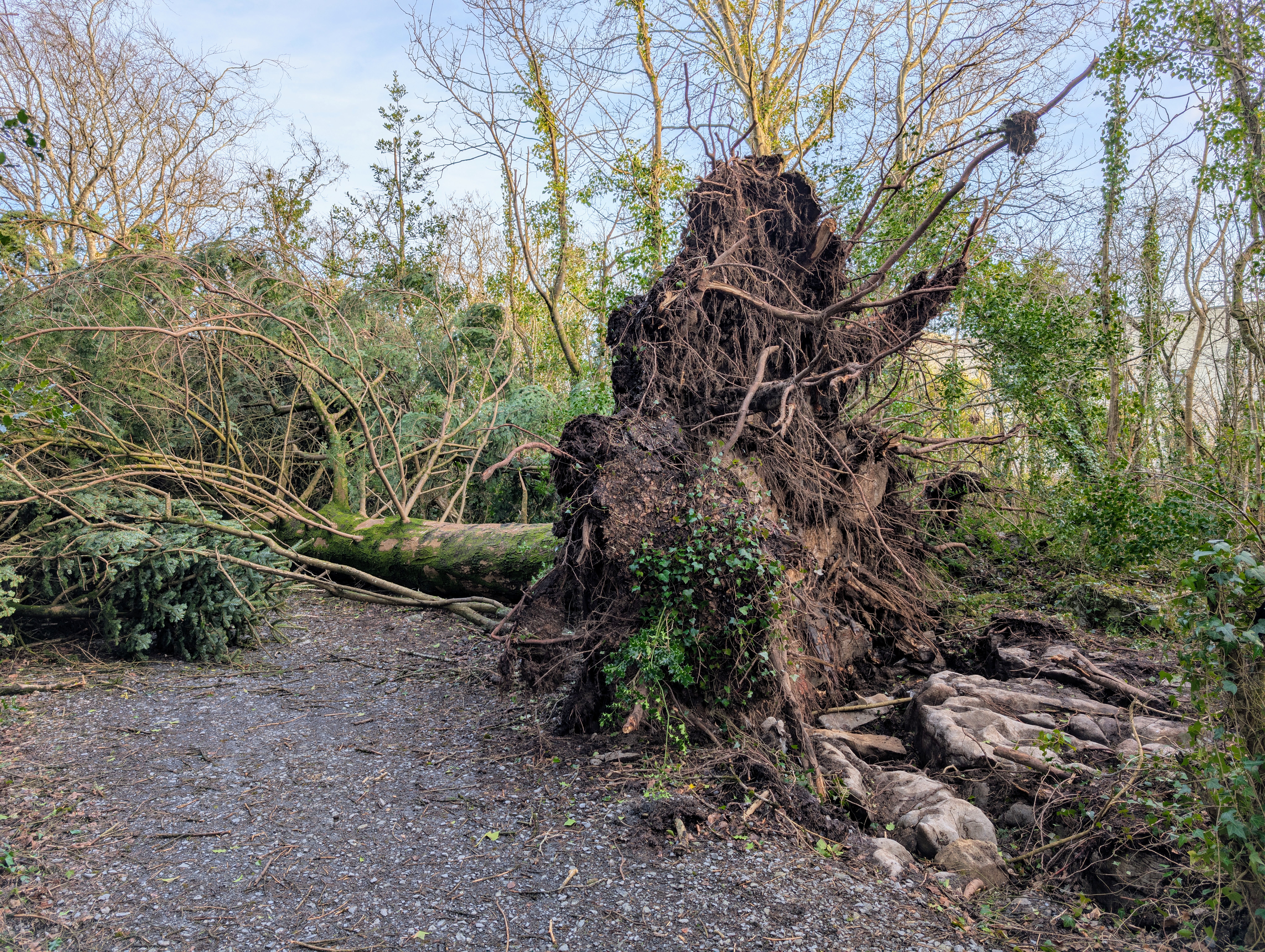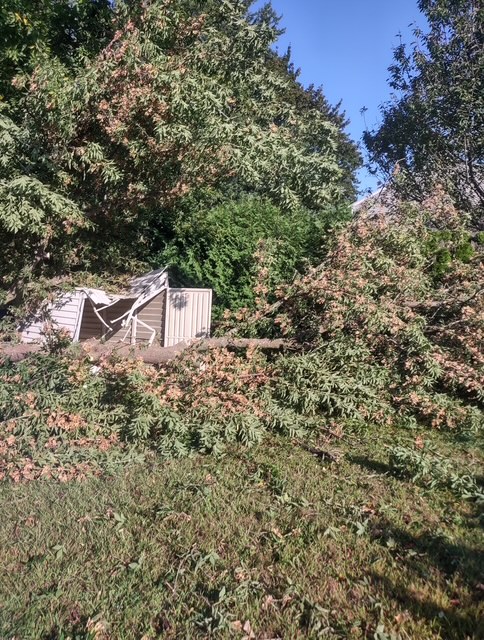How Do I Safely Inspect Tree Damage After a Storm?
By Tree Emergency Expert
Tree Emergency Expert

At 1 Tree Emergency, we specialize in emergency tree services and post-storm response, so we know what to look for when assessing storm damage. This guide will help you understand how to safely inspect trees after a storm, what warning signs to check for, and when it’s time to call a professional.
How Do I Safely Inspect Tree Damage After a Storm?
When a big storm hits, trees often take the brunt of it — and figuring out what’s safe (and what’s not) can be stressful. Whether it’s high winds, heavy rain, or lightning, damaged trees can pose serious harm to your home, property, and anyone nearby.
At 1 Tree Emergency, we specialize in emergency tree services and post-storm response, so we know what to look for when assessing storm damage. This guide will help you understand how to safely inspect trees after a storm, what warning signs to check for, and when it’s time to call a professional.
Step 1: Stay Safe and Survey from a Distance
Before walking around your yard, take a careful look from a distance. Safety should always come first.
Do not approach any tree that is:
Touching or close to power lines
Hanging over your home or car
Split, cracked, or leaning more than before the storm
If you notice these signs, step back immediately and contact emergency services or a certified tree professional like 1 Tree Emergency. Damaged trees can collapse suddenly without warning.
Step 2: Look for Obvious Structural Damage
Once you’re sure the area is safe, begin a basic visual inspection. You don’t need to climb or touch anything—just observe.
Here’s what to look for:
Broken or hanging limbs:
These are dangerous and can fall unexpectedly.
Splits or cracks in the trunk:
Structural damage like this means the tree’s stability is compromised.
Uprooted roots or lifted soil:
This often means the tree is leaning and may topple soon.
Missing bark or exposed wood:
Indicates internal injury and potential decay.
If any of these issues are visible, it’s best to contact a professional tree damage inspection service immediately. Even minor cracks can worsen over time or with another storm.
Step 3: Check the Tree’s Canopy and Branches
The top of the tree often reveals the most about its condition after a storm. Use binoculars if needed and look for:
Broken tops or “split leaders”
(where the top of the tree has snapped)
Branches tangled or lodged in other limbs
Large sections of missing leaves or foliage
These signs often mean the tree has sustained serious stress and may not recover fully without pruning or partial removal.
Step 4: Examine the Base and Surrounding Ground
A healthy root system anchors the tree. After heavy rain or wind, inspect the base for:
Soft or spongy soil around the trunk
Cracks in the ground where roots may have shifted
Fungal growth that suggests rot
Even if the tree looks upright, hidden root damage can cause delayed failure. That’s why many homeowners call 1 Tree Emergency for a post-storm root inspection—our team uses specialized tools and experience to detect what’s happening below the surface.
Step 5: Identify Partial Failures Early
Not every damaged tree shows obvious signs right away. Some may appear stable but have internal cracks or torn branches that will fall later.
You may notice:
Leaning that wasn’t there before
Branches suddenly drooping or losing color
Exposed wood that looks wet or splintered
If you’re unsure, it’s always safer to bring in a certified arborist or emergency tree specialist. They can perform a full safety assessment and figure out whether the tree can be saved or needs removal.
Step 6: Document the Damage
If the storm damage may lead to an insurance claim, documentation is key. Take clear photos from multiple angles—before any cleanup begins.
Include:
The entire tree
Close-ups of cracks, broken limbs, or uprooted areas
Any surrounding property damage
At 1 Tree Emergency, we work directly with insurance carriers and adjusters. Our crews provide detailed photo and video documentation, timestamps, and reports that help move claims along faster.
Step 7: Know When to Call for Emergency Tree Service
You should contact a storm damage tree removal team immediately if:
The tree or large branches are resting on your home, fence, or vehicle
There are downed power lines
A tree is leaning dangerously or has uprooted
You hear cracking or popping noises near the trunk
Emergency tree removal should be handled by professionals with the right equipment. At 1 Tree Emergency, our crews are available 24/7 to handle hazardous tree situations safely and efficiently.
Step 8: Plan for Recovery and Prevention
Once the immediate danger is handled, it’s smart to think ahead. Regular tree care can reduce future storm risks.
Here’s how to strengthen your trees long-term:
Schedule annual pruning to remove weak or overgrown branches
Have large trees inspected before storm season
Keep trees properly watered and fertilized for strong root growth
Remove any dead or diseased trees early
A little maintenance can go a long way toward avoiding another stressful cleanup in the next storm.
Final Thoughts
Storms can leave behind hidden dangers that aren’t always obvious right away. The key is to stay safe, assess from a distance, and call in experts when needed.
At 1 Tree Emergency, we provide 24/7 emergency tree service, damage assessments, and complete debris removal for homeowners, municipalities, and insurance partners across the country. Our goal is always the same, to keep your property safe and help you recover quickly after severe weather.
📞 Need help after a storm? Contact 1 Tree Emergency for immediate assistance.
Our trained crews are available day and night for emergency tree removal, inspections, and claim support.
Share this article:
Related Articles

Tree Damage and Insurance Claims: What Homeowners in the U.S. Should Know After a Storm
Not all tree damage is treated the same by your homeowners insurance. In most cases, you’re covered if a fallen tree damages your house, fence, or garage — but there are exceptions. For example, you’re usually protected if a storm knocks a tree onto your roof or if a neighbor’s tree falls onto your property. However, if a dead or neglected tree comes down without hitting anything, or blocks only your yard, your policy may not cover the removal costs.

Nor’easter 2025: What CT, NJ & NY Homeowners Should Know (And How to Protect Your Trees)
This upcoming nor’easter isn’t just targeting Connecticut — it’s also expected to hit New Jersey and New York with strong winds, heavy rain, and coastal flooding. Trees near the coast or in vulnerable spots will face risks. Get your property prepared now to avoid damage.

Storm Damage Guide: Lessons from the 2025 Massachusetts Tornado Season
Tornadoes don’t just topple trees. They twist trunks, splinter limbs, and leave hidden hazards that can linger for weeks. If you live in Massachusetts or across New England, the storms of 2025 were a wake-up call: severe weather is no longer rare. Here’s how to protect your property—and why calling a professional emergency tree service matters more than ever.
Need Emergency Tree Service?
Our team of certified arborists is available 24/7 to handle any tree emergency.